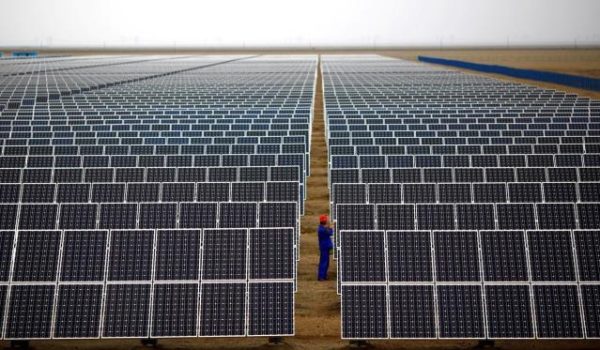
Quartz is the main mineral component of many rocks such as granite and gneiss. It is a very important industrial mineral. Quartz resources are widely used in the photovoltaic field and are one of the key basic raw materials for the photovoltaic industry.
Photovoltaic silicon material is solar grade polysilicon, which is the core raw material of photovoltaic power generation system and the upstream raw material of photovoltaic industry chain. It is a gray-black solid with metallic luster, with high melting point, high hardness, brittleness, and inactive chemical properties at room temperature. characteristics, and has semiconductor properties, is an extremely important excellent semiconductor material, known as the “black gold” in the photovoltaic industry chain. The current mainstream polysilicon production technologies mainly include the improved Siemens method and the silane fluidized bed method, and the product forms are rod silicon and granular silicon respectively.
Polysilicon can be used as raw material for pulling single crystal silicon. The production process of single crystal silicon includes two kinds of crucible-free suspension zone melting method and crucible Czochralski method. The crucible-free floating zone melting method refers to the use of high-frequency coils in a vacuum furnace to create a melting zone at the contact between the single crystal seed crystal and the polycrystalline silicon rod, and finally produce high-purity, small-diameter single crystal silicon. The crucible straight-pull method is also called the Checkerski method. This method needs to clean the raw material polysilicon first to remove impurities on the surface, and then clamp the seed crystal on the pull rod fixture, and undergo seeding, shouldering, and equal diameter. Growth, finishing and other processes, and finally produce monocrystalline silicon.
Photovoltaic glass raw material: low iron quartz sand
Photovoltaic glass is an important accessory in the photovoltaic industry chain and an irreplaceable part of photovoltaic power generation modules. Quartz sand is one of the main raw materials for producing photovoltaic glass. The quality of quartz sand has an important impact on the quality of photovoltaic glass.
Photovoltaic glass is different from ordinary glass. It is made of ultra-clear glass through deep processing. Ultra-clear glass is a kind of ultra-transparent low-iron glass, also known as low-iron glass and high-transparency glass, which has the advantages of low self-explosion rate, color consistency, high visible light transmittance, good permeability, and low ultraviolet transmittance. Light transmittance is one of the important indicators affecting the performance of photovoltaic ultra-clear glass. Since iron ions are easy to dye, in order to ensure high light transmittance of photovoltaic ultra-clear glass, the iron content of photovoltaic ultra-clear glass is required to be low.
There are various impurities in quartz raw materials, such as Fe, Al, K, Na, Ca, etc., and the most harmful impurity in the production of ultra-clear glass is iron impurity, which can exist in free form or can be replaced by thin film or lattice Or inclusions exist in the form of minerals, which need to be removed effectively through a series of processes. For the removal of iron impurities, it needs to go through a series of physical and chemical deep processing processes. According to the classification of removal methods, it is mainly divided into physical methods (washing and graded desliming, scrubbing, magnetic separation, gravity separation), chemical methods (flotation method) , acid leaching) and microbial methods, in the deep processing of quartz raw materials, these methods can be combined according to the existing form and state of iron impurities in order to find a deep processing process suitable for the mineral source.
In short, quartz sand plays an irreplaceable role in industrial silicon, quartz crucible and photovoltaic glass in the photovoltaic industry. With the growing global demand for renewable energy, the rapid development of the photovoltaic industry, and the continuous increase in photovoltaic installed capacity, the demand for quartz sand has also ushered in rapid growth.
